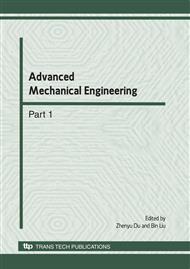p.1013
p.1019
p.1027
p.1032
p.1036
p.1040
p.1046
p.1052
p.1056
Large Network Model of Complex Systems
Abstract:
We proposed a random network model to describe complex systems. The model is solved exactly by mean-field method and differential equation. We demonstrated the triangle distribution firstly to calculate the clustering coefficient. When the size of the network tends to infinity, the model has high clustering coefficient.
Info:
Periodical:
Pages:
1036-1039
Citation:
Online since:
June 2010
Authors:
Keywords:
Price:
Сopyright:
© 2010 Trans Tech Publications Ltd. All Rights Reserved
Share:
Citation:


